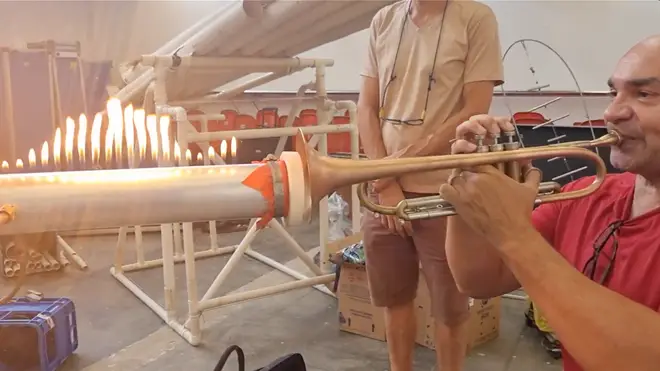On Air Now
Classic FM Breakfast with Tim Lihoreau 7am - 9am
7 November 2023, 17:25

Man creates sound wave visualiser using a trumpet and fire
Brazilian trumpeter Moises Alves creates a spectacle of sound using a metal tube, dancing flames, and a fiery trumpet solo.
For most people, music is something we only experience with our ears. And when it comes to the science of sound, it’s usually easier to understand the things that you can see. Seeing is believing, after all.
When a genius like Moises Alves transforms physics into a visual spectacle, the results are often mesmerising and baffling, all at the same time.
Thanks to Alves, who plays trumpet with Brazil’s Claudio Santoro National Theatre Symphony Orchestra, we can now see the shape of sound waves through the medium of 100 tiny flames.
Read more: What makes the perfect acoustic, according to science?

Playing his trumpet directly towards the flaming tube, Alves performs a jazzy lick to the melody of Se não existisse o sol, by Brazilian artist Boi da Maioba, and the flames appear to dance in patterns to his tune.
Alves’ contraption is also known as a ‘Rubens tube’, or sometimes more simply a ‘flame tube’, after its inventor, the German physicist Heinrich Rubens.
The apparatus consists of a long pipe which is sealed at both ends, with pin-prick perforations along the top. The seal at one end is attached to a source of flammable gas, which leaks through the holes and creates hundreds of tiny fires when lit.
At the other end, Alves appears to have placed a rubber seal over the end of the tube, which acts as a diaphragm and vibrates as he plays his trumpet mere centimetres away from it.
Read more: Fearless trombonist invents epic flame-throwing musical instrument

As the sound waves emanating from Alves’ trumpet hit the rubber diaphragm, they cause it to vibrate at the same frequency as each note. With each vibration, the diaphragm contracts and expands, causing the air pressure to ebb high and low as it flows through the tube.
The sound waves then reflect off the sealed end of the tube and make their way back towards Alves and his trumpet.
The result is clearly visible, and quite beautiful. Pressure changes within the tube affect how high each flame burns, creating a visible wave shape above the apparatus which moves and changes according to note pitch and volume.
It all goes to show that when music and science collide, wonderful things can happen.